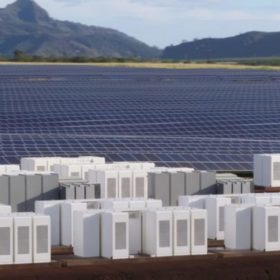Demand, policies, investment key to green hydrogen development
Ruchi Gupta is a research fellow at the University of Geneva’s Institute for Environmental Sciences. She focuses on how flexibility options, such as sector coupling with hydrogen production, can support renewable energy integration and decarbonize a wide range of sectors.
Electricity derivatives will offer power offtake certainty for renewable investors
An Institute for Energy Economics and Financial Analysis (IEEFA) report says the sale of power in the futures market will benefit renewable energy developers and distribution companies alike.
Pairing a battery with solar could cut its overall value, Berkeley Lab report says
Separating generation from storage usually delivers higher value, but it may also deliver higher costs, the report said.
India again ranked the world’s most attractive solar market by Ernst & Young
The nation maintained the highest score of 62.7 for solar in the latest edition of Ernst & Young’s renewables attractiveness index. It ranked third for overall renewable energy investment.
Solar-plus-storage to produce hydrogen from seawater
Spanish PV project developer Gransolar is planning to build a large-scale green hydrogen production plant in the Port of Almería, in southern Spain.
Green hydrogen supply chain concerns
With South Africa holding 63,000 of the world’s estimated 69,000 metric tons of platinum reserves – according to the Statista.com website – and Russia and Zimbabwe a further 5,100 between them, the European Commission has cited the metal as an example of a potential supply chain bottleneck that could handicap its grand plans for renewables-powered hydrogen production.
‘Hydrogen as a universal climate solution might be a bit of false promise’
Hydrogen and hydrogen-based fuels will not be able to move forward fast enough to replace fossil fuels and tackle climate change, according to a German-Swiss research team that claims direct electrification alternatives are cheaper and easier to implement. The scientists cite too-high prices, short-term scarcity and long-term uncertainty, as the main reasons for their skepticism.
Tesla shifts battery chem for its Megapack energy storage system
The US electric car manufacturer is reportedly shifting to cobalt-free lithium iron phosphate (LFP) batteries for its utility-scale battery.
States must plan now for utility-scale battery storage
A new report says the Indian States must develop plans to incentivize investments into the deployment of utility-scale battery storage—just as they did for solar.
The long read: The ‘other side’ of batteries
Graphite’s pivotal role in electric-vehicle battery technology is coming under increasing scrutiny. Graphite is almost exclusively produced in China, and while the processing of the mineral poses serious environmental issues, the alternatives appear costly. Ian Morse looks at what’s next for critical graphite supplies.















